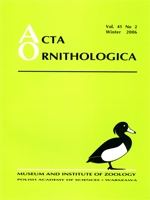Wintering birds were studied in three plots (10.0–14.5 ha) in urban green areas in central Poland. Two observers independently counted the birds in each plot on six days evenly distributed between mid-December and mid-February. On the count day, each observer did two surveys: an early count, starting at 8 a.m., and immediately afterwards, a late count, finishing before noon. Using three-way ANOVA, the differences between densities, numbers of species and Shannon-Wiener diversity indices obtained in single counts were tested in relation to independent variables: the count time (early or late), the observer, and the plot. No effect of plot variable was revealed. An observer effect was, however, found in the number of species, as well as in the densities of the whole avifauna and of flocking species. Differences in the bird diversity indices were found only between the early and late counts. The results of the present study indicate that there are no means of definitively assessing the number of species, density, and species diversity of birds wintering in small parts of urban green areas.
REFERENCES
 1991. Effect of environmental factors on tits wintering in a Hungarian marshland. Ornis Hungarica 1: 29–36. Google Scholar
1991. Effect of environmental factors on tits wintering in a Hungarian marshland. Ornis Hungarica 1: 29–36. Google Scholar
 1994. Roosting site fidelity of Great tits (Parus major) during winter. Acta Zoolog. Acad. Scien. Hungaricae 40: 359–367. Google Scholar
1994. Roosting site fidelity of Great tits (Parus major) during winter. Acta Zoolog. Acad. Scien. Hungaricae 40: 359–367. Google Scholar
 dra
,
P. Tykarski
1997. [Comparison of methods for establishing interspecific number relations in winter concentrations of corvids.] Notatki Ornitol. 38: 61–67. Google Scholar
dra
,
P. Tykarski
1997. [Comparison of methods for establishing interspecific number relations in winter concentrations of corvids.] Notatki Ornitol. 38: 61–67. Google Scholar





